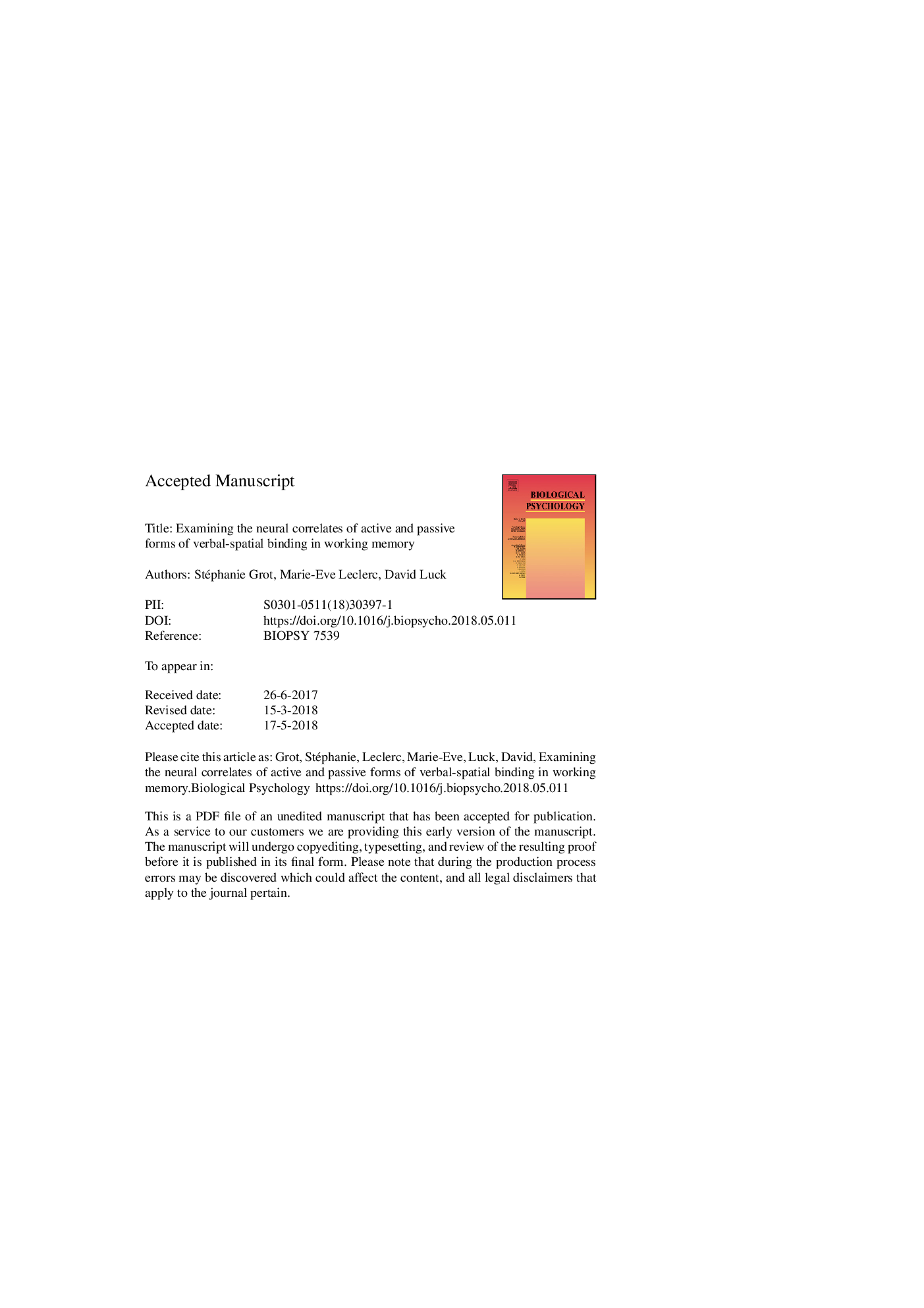| Article ID | Journal | Published Year | Pages | File Type |
|---|---|---|---|---|
| 7278081 | Biological Psychology | 2018 | 40 Pages |
Abstract
We designed an fMRI study to pinpoint the neural correlates of active and passive binding in working memory. Participants were instructed to memorize three words and three spatial locations. In the passive binding condition, words and spatial locations were directly presented as bound. Conversely, in the active binding condition, words and spatial locations were presented as separated, and participants were directed to intentionally create associations between them. Our results showed that participants performed better on passive binding relative to active binding. FMRI analysis revealed that both binding conditions induced greater activity within the hippocampus. Additionally, our analyses divulged regions specifically engaged in passive and active binding. Altogether, these data allow us to propose the hippocampus as a central candidate for working memory binding. When needed, a frontal-parietal network can contribute to the rearrangement of information. These findings may inform theories of working memory binding.
Keywords
Related Topics
Life Sciences
Neuroscience
Behavioral Neuroscience
Authors
Stéphanie Grot, Marie-Eve Leclerc, David Luck,
